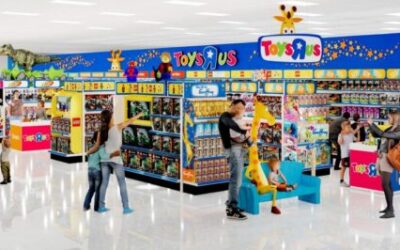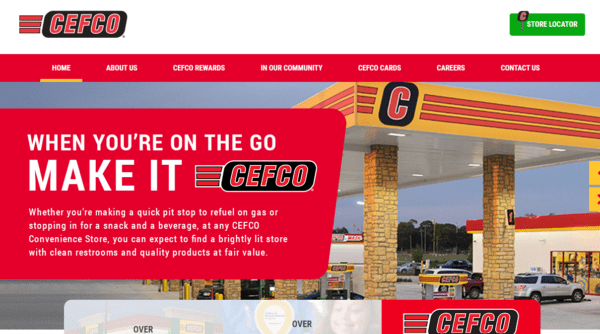How One Beauty Brand is Making Community-Powered Commerce a Reality


What happens when a beauty executive, an ecommerce expert and a creative strategist decide to start a company? You get KIKI World, a next-gen beauty company and community-powered commerce engine.
Drawing on their combined firsthand experience in digital and consumer goods, Co-founders Jana Bobosikova, Ricky Chan and Brendon Garner knew that traditionally, brands followed a linear, hierarchical path in which products were developed, sold and then marketed to a community. The community then would do most of the “heavy lifting,” sharing these products with friends to help the business grow. But the problem with this model, according to Garner, is that while consumers do all these activities, they don’t see very much in return for their loyalty — or their labor.
“When we were thinking about starting KIKI, we really looked at it through the perspective of how we would want to start a brand today — and that would be starting with community first,” Garner said in an interview with Retail TouchPoints. “We wanted to give [that community] the power to actually choose what we create.”
The vision for KIKI was built around a simple thesis: if you give people the power to make decisions and reward them for their participation, it will create an ongoing cycle of activity, engagement and loyalty. An added bonus: the data KIKI garners from these campaigns provide the brand with valuable business intelligence about which products are likely to sell well and what demand is likely to be.
Earning Rewards for Activity
KIKI designed the voting experience to be simple: Visitors sign up for a membership account, enter their full names, phone numbers and email addresses to verify their accounts, and then get access to daily votes. With each vote, members will receive a certain number of points and, in some cases, digital collectibles.
Now with more than 5,000 members and 20 voting campaigns that have gone to market, KIKI is continuing to refine and expand its model to transform the way beauty products are designed and manufactured.
Memorable products are the foundation of the KIKI brand and business model, according to Garner: “You’re seeing products that don’t currently exist in the market or are really differentiated.”
In May 2023, KIKI World went to market with its first product, a quick-dry nail polish called Pretty Nail Graffiti, and asked its community to vote on the final colors that would be made. Because the product was a novelty in the market, it gave KIKI “a really nice leg up — and that has continued to happen with our products,” Garner said.
Redefining Gamification
The KIKI site now includes three additional product voting campaigns consumers can vote on:
- Spot On Stickers for acne treatment, for sticker shape and design;
- One Night Strand hair color, for favorite color and scent; and
- Play Paint Marker liquid eyeliner for preferred color.
Members who vote on the winning products get “first dibs” when the products go on the market, and they even receive special digital collectibles and exclusive rewards added to their account. These elements give members some bragging rights, but there are other elements driving the psychology of the experience that make it truly addictive.

“When someone votes, they have the ability to not only cast their vote every single day, but they earn rewards every time they participate,” Garner noted — a bonus for a first vote and a daily reward for each subsequent vote, which accrue in customers’ accounts and can be converted into exclusive discounts.
Other rewards are less tangible but no less real, including the opportunity to influence the product that’s ultimately created: “This isn’t about taking a customer survey and maybe winning a gift card,” said Garner. “Every single day, you’re going to contribute to ultimately what we’re going to create.”
Accelerating Time to Market and Improving Demand Planning
On the surface, all these elements contribute to a relatively robust gamification strategy — but points, rewards and even vote leaderboards are hardly new, especially in retail. What is new about this model is how KIKI World uses community insights and voting behaviors to inform future product development, supply chain operations and even demand planning.
Individuals’ voting behaviors help the company gauge which SKUs members are most interested in, which allows KIKI World to create more tailored marketing journeys that drive site visits and engagement. The brand also tallies votes to figure out not only which shades to develop but to better project how many units of each SKU to manufacture.
“It’s a really important piece of this whole puzzle because when you’re making physical goods, there are heavy supply chain and merchandising considerations,” Garner said. “If we can help predict and even share leaderboards with our vendors, we can get ahead of schedule. Even if it’s a close vote, we can still do a lot to predict variants that are ultimately going to be produced.”
For example, the winning color for KIKI World’s first Pretty Nail Graffiti launch was Pearl. Because the color won by a pretty significant margin, the team was able to move the product into production earlier and ship items within one month (the typical timeline is six to nine months).
Garner added that the company wants to continue to fine tune its supply chain collaboration using this data as a baseline. “You always want to be top of mind with your community and your customers, and making sure you’re fulfilling what you want to as a brand,” Garner said. “It’s definitely helped Jana, our CEO, better predict which products are going to be produced, and really execute upon some aggressive timelines that aren’t traditionally realistic.”
A Virtuous Cycle of Engagement
When consumers take part in the KIKI World voting process, they are more actively engaged and, in turn, more invested in the brand. As a result, consumers are more likely to buy the products they helped bring to market.
KIKI World found that more than 50% of product sales are made by members who have voted in at least one co-creation campaign. Moreover, once members have experienced the dopamine hit of having their vote count, they’re more likely to participate in future votes: 30% of members have voted more than two times and top members have voted more than 200 times, according to company data.
“We’re seeing members engaged [with the process] more than four times a month — and they’re not always tied to a purchase,” Garner said. “We’re creating this natural engagement wheel where we’re not solely reliant on third parties. We’re creating site experiences that drive organic and direct traffic. Even if someone doesn’t have the intent to purchase, they’re still visiting the site, so from an ancillary perspective, they’re going to see when a new product is released. It just creates a nice a nice setting to engage organically with the community, and also create this opportunity for people to learn about new products that we’ve launched and are available for purchase.”
Another layer of gamification also inspires consumers to continue to engage with products once they have them in hand. KIKI embeds NFC chips into each product, so consumers are rewarded for each reapplication. The goal is to use this system to reward consumers for their actual involvement and engagement with the brand, which is a more meaningful driver of brand loyalty, according to Garner. It also allows consumers to rack up more points, which they can then exchange for physical products, so they don’t have to pay a single dollar out of pocket.
A New Model for Commerce
Although the mission for KIKI was conceptually quite simple, Garner and his co-founders found that no existing ecommerce platform on the market could support this community-powered business model at the level of intricacy required.
“The easiest way [to implement the model] was to build our own software that powers our co-creation app,” Garner said. “It allows anybody to contribute their voice and be rewarded for their contribution.”
The software is designed to be highly customizable, which allows KIKI to easily launch co-creation campaigns and establish different rewards and points systems. The technology also has the power to scale, which has unlocked new opportunities for KIKI to expand the business through collaborations that will bring new and innovative products to market.
“We built the core platform that powers KIKI and we’ve found partners are reaching out to us, whether it’s creators, brands or even publications, and they’re interested in leveraging the technology to launch their own campaigns,” Garner revealed. For example, the company has partnered with Gossip Protocol on CHIPPED, an NFC-embedded press-on nail brand that allows users to share valuable information, such as company websites, social media accounts and other contact details, with a single tap. Designed to be a business-card replacement for tech-savvy and fashionable individuals, CHIPPED nails automatically load a person’s KIKI profile when scanned. Consumers can vote to help the companies determine which colors to manufacture through December 31, 2023.











